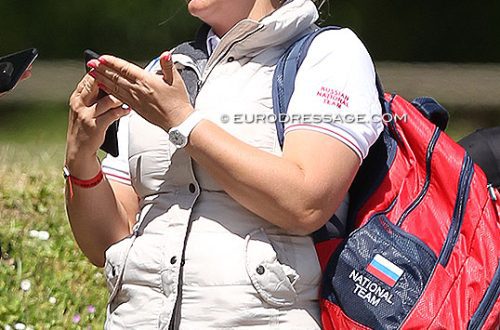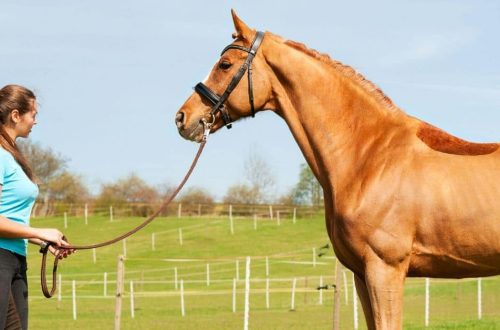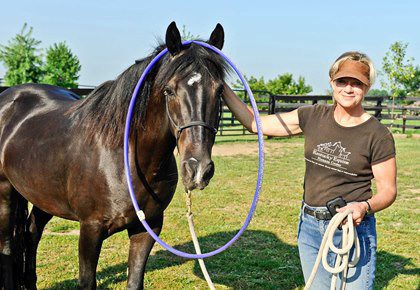The horse “hangs on the hands”: causes and solutions.
Horse Hanging on Hands: Causes and Solutions
First, let’s make it clear right away: if the horse hangs on your arm (you feel heaviness), this is definitely a rider’s problem. Even if you are 100% sure that the horse is pulling the reins either forward and down or in the opposite direction on the turn, it is because you are not using the controls correctly.
As a rule, there is four reasons why a horse lies down in the hand.
1) The horse is moving forward.
A horse that moves on the forehand tends to be heavy in the hand. The horse (especially for children, rolling) rests on the snaffle, not reacting to increased pressure, enslaves the jaw and neck. More impulsive horses may slow down the rhythm. Teeth grinding is observed, the horse tails and lays his ears. The horse and rider are tense, although from the outside it may not look like that.
What is going on? The rider feels a heaviness in the hand and, resisting, sits down “harder”, straining the back, shoulders and lower back. This tension becomes more noticeable when riding on hard ground or uneven surfaces. The rider’s hands become restless, he is kicked off the saddle. The leg is also unstable, the leg sways, especially at a canter.
2) The horse is moving too slowly.
A slow horse often moves forward due to lack of momentum from the hindquarters. If you are comfortable and comfortable on such a horse, you don’t feel pushes in the gaits, this does not mean that the horse moves well and softly, it just takes short steps, does not work with its back, it lacks momentum. Often such horses are “wooden”, they do not respond well to controls. The back is not rounded and stretched.
3) The horse is moving too fast.
There is a saying: “Speed is the enemy.” A horse that is moving too fast will automatically rebalance on the forehand. The weight in the hand increases, the horse rests on the snaffle and lies on the reins.
4) The rider encourages the horse to push back and pull on the reins.
It happens to all of us, especially at the beginning of our training. We may not even know that we are pulling the reins on ourselves. We are used to doing everything with our hands, so the first thing we do is grab for more pressure. Sometimes we pull back to balance ourselves in the saddle. Sometimes we want to influence the horse by using more of the arm without using the body and legs. Finally, many of us simply feel more confident putting on more tension than necessary – it’s hard to let go of the horse and be responsible for our own weight and balance.
Regardless of the reason a horse hangs on its hands, there are four stepswhich, when performed consistently, can help you ease the pressure on the reins and help the horse get the right balance and start moving from the hindquarters. If you feel that the main problem is the fourth, pay attention to yourself too (work on balance and balance, take time to sit down).
So:
1. Give up the reins by a couple of inches. When the reins are softened, the elbow advances only a couple of centimeters (without going beyond the line of the body). Don’t open your brush. Control the length of the rein, keep the same contact on the left and right.
Don’t give your horse too much rein. There should be enough rein for the horse to feel relaxed and move forward. If you give your horse a lot of rein, he may go to the front balance (dive down and rest against your hand).
On a turn, you can only soften one elbow. If you are working in a straight line, you can give both elbows.
2. Movement from the impact of the lower back and leg.
Some horses move forward very well just from the impact on them of the lumbosacral region. For other horses, you also need a leg push. In any case, you should feel the horse respond, feel the activation of his hind legs. Be ready to move with the horse. Make sure you don’t fall behind if the horse responds with too much energy.
3. Half halts.
If at If you let the horse take the reins away from you by pulling him forward, he will not be able to move from his hindquarters, lose his balance and start to accelerate. Always use half halts to direct the horse’s energy in the right direction. When sent using a half halt, the horse activates the hind legs, the balance remains on the back, the forehand is light, the head and neck are in place.
4. Refund after softening the occasion.
This last step is the key. If you soften the reins by simply lengthening the reins, the horse will stretch and go forward. To return it to its previous state, you will need to pick up the occasion with a brush, combining it with the sends, which will take longer. Keep the rein length the same. When softening, use only your elbows. Thus, if you soften the rein, you can easily return it to its previous position by moving the elbow back into place.
Valeria Smirnova (personal page of the author in VK); Based on materials from the site http://dressagetoday.com





